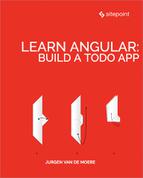Preface
So, why Angular? Well, because it’s supported on various platforms (web, mobile, desktop native), it’s powerful, modern, has a nice ecosystem, and it’s just cool. Not convinced? Let's be a bit more eloquent, then:
- Angular presents you not only the tools but also design patterns to build your project in a maintainable way. When an Angular application is crafted properly, you don’t end up with a tangle of classes and methods that are hard to modify and even harder to test. The code is structured conveniently and you won’t need to spend much time in order to understand what is going on.
- It’s JavaScript, but better. Angular is built with TypeScript, which in turn relies on JS ES6. You don’t need to learn a totally new language, but you still receive features like static typing, interfaces, classes, namespaces, decorators etc.
- No need to reinvent the bicycle. With Angular, you already have lots of tools to start crafting the application right away. You have directives to give HTML elements dynamic behavior. You can power up the forms using
FormControland introduce various validation rules. You may easily send asynchronous HTTP requests of various types. You can set up routing with little hassle. And there are many more goodies that Angular can offer us! - Components are decoupled. Angular strived to remove tight coupling between various components of the application. Injection happens in NodeJS-style and you may replace various components with ease.
- All DOM manipulation happens where it should happen. With Angular, you don’t tightly couple presentation and the application’s logic making your markup much cleaner and simpler.
- Testing is at the heart. Angular is meant to be thoroughly tested and it supports both unit and end-to-end testing with tools like Jasmine and Protractor.
- Angular is mobile and desktop-ready, meaning you have one framework for multiple platforms.
- Angular is actively maintained and has a large community and ecosystem. You can find lots of materials on this framework as well as many useful third-party tools.
So, we can say that Angular is not just a framework, but rather a platform that empowers developers to build applications for the web, mobile, and the desktop.
This book presents a complete project tutorial: building a todo app with Angular CLI. Along the way, you'll refactor the app to take advantage of some of Angular's best features.
Who Should Read This Book?
This book is for all front-end developers who wannt to get proficient with Angular and its related tools. You’ll need to be familiar with HTML and CSS and have a reasonable level of understanding of JavaScript in order to follow the discussion.
Conventions Used
Code Samples
Code in this book is displayed using a fixed-width font, like so:
<h1>A Perfect Summer's Day</h1>
<p>It was a lovely day for a walk in the park.
The birds were singing and the kids were all back at school.</p>
Where existing code is required for context, rather than repeat all of it, ⋮ will be displayed:
function animate() {
⋮
new_variable = "Hello";
}
Some lines of code should be entered on one line, but we’ve had to wrap them because of page constraints. An ➥ indicates a line break that exists for formatting purposes only, and should be ignored:
URL.open("http://www.sitepoint.com/responsive-web-
➥design-real-user-testing/?responsive1");
You’ll notice that we’ve used certain layout styles throughout this book to signify different types of information. Look out for the following items.
Tips, Notes, and Warnings
Hey, You!
Tips provide helpful little pointers.
Ahem, Excuse Me ...
Notes are useful asides that are related—but not critical—to the topic at hand. Think of them as extra tidbits of information.
Make Sure You Always ...
... pay attention to these important points.
Watch Out!
Warnings highlight any gotchas that are likely to trip you up along the way.
